Here's what we learned from analyzing 2.2 billion lightning strikes
With over 2 billion events a year, lightning is a near-constant presence in our atmosphere. But for all its dazzling beauty, there’s no denying that lightning brings danger, disruption, and destruction to our lives.
Now in its eighth year, the 2024 Vaisala Xweather Annual Lightning Report features exclusive data, maps, rankings, and more, with a special focus on lightning’s impact on the world’s busiest airports and largest U.S. wind farms.
Let's look at a few of the eye-opening insights from this year's report.
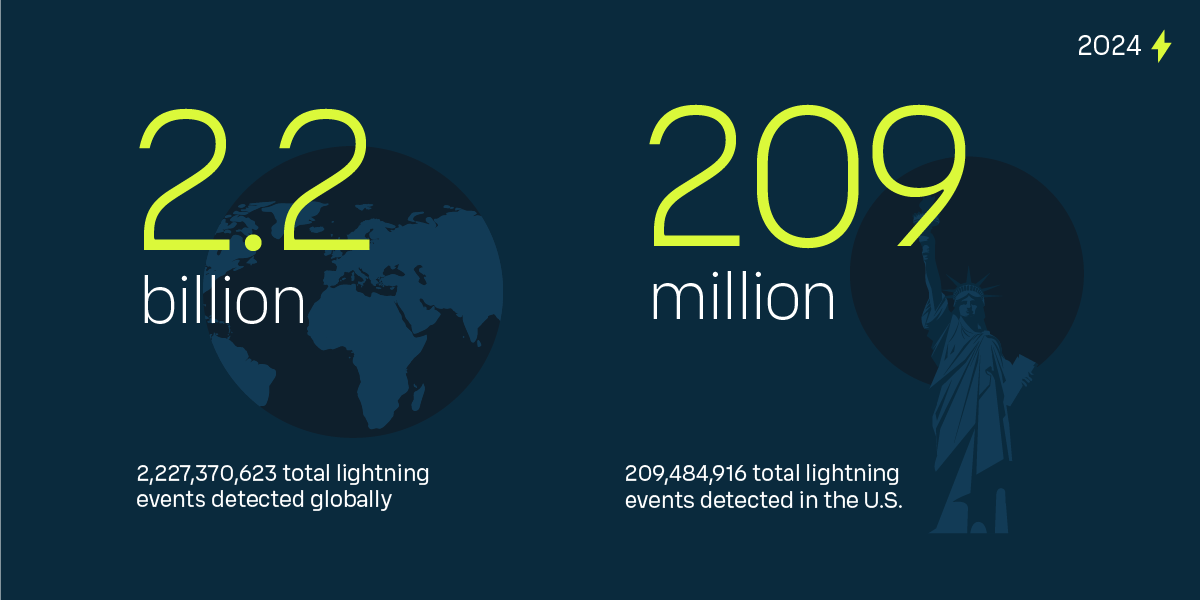
We detected 2,227,370,623 lightning events worldwide in 2024. Incredibly, just 5 countries—the United States of America, Brazil, Australia, the Democratic Republic of the Congo, and Indonesia—accounted for more than 50% of all lightning over land last year.
Our global lightning detection network detects lightning anywhere on Earth. In August 2019, we detected lightning 52 kilometers from the North Pole, the northernmost lightning strike ever recorded.
Vaisala also operates the world’s most accurate national lightning detection network, pinpointing lightning events in the United States with a median location accuracy of just 84 meters. That's less than the length of a football field. In 2024, we detected a total of 209,484,916 lightning events in the U.S.—more than any other country.
How does lightning impact the world’s busiest airports?
Lightning flashes near airports put lives and equipment at risk. With more than 100,000 commercial flights worldwide every day and 2024 passenger numbers surpassing pre-pandemic levels, precise and reliable lightning detection is critical for minimizing delays while keeping travelers and airport ground crews safe.
For this year's report, we analyzed a decade of lightning activity to estimate the impact of lightning risk at the world’s busiest airports.
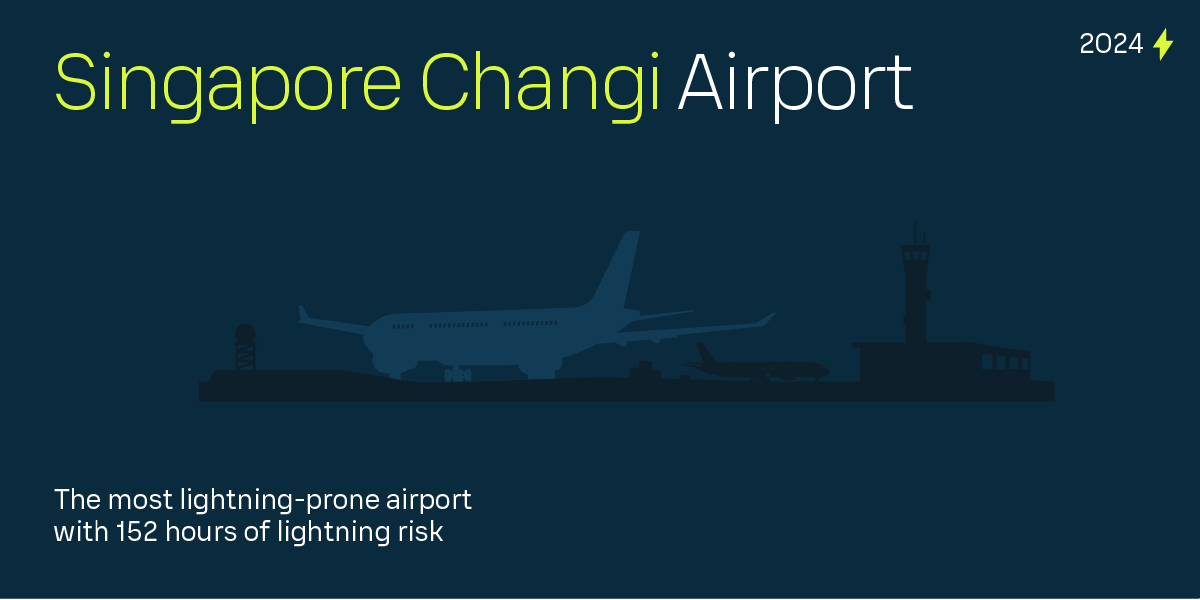
Singapore Changi Airport experiences 357 episodes of lightning risk a year on average. These result in 9,903 minutes of lightning risk affecting an estimated 1.1 million passengers.
Hartsfield–Jackson Atlanta International Airport, the world’s busiest airport, experiences 2,994 minutes of lightning risk a year on average, potentially affecting the flights of 596,000 passengers.
These lightning risk times are based on halting ground operations for 10 minutes when lightning is detected within 8 kilometers (5 miles) of the airport. Safety margins at individual airports may vary.
Read the full report to see lightning's impact on the world's 20 busiest airports.
Where are the most lightning-prone U.S. wind farms?
Wind farms are natural targets for lightning. To produce this year's report, we analyzed 9 years of lightning activity around 67,000 wind turbines to create the industry’s most extensive assessment of lightning risk for U.S. wind farms.
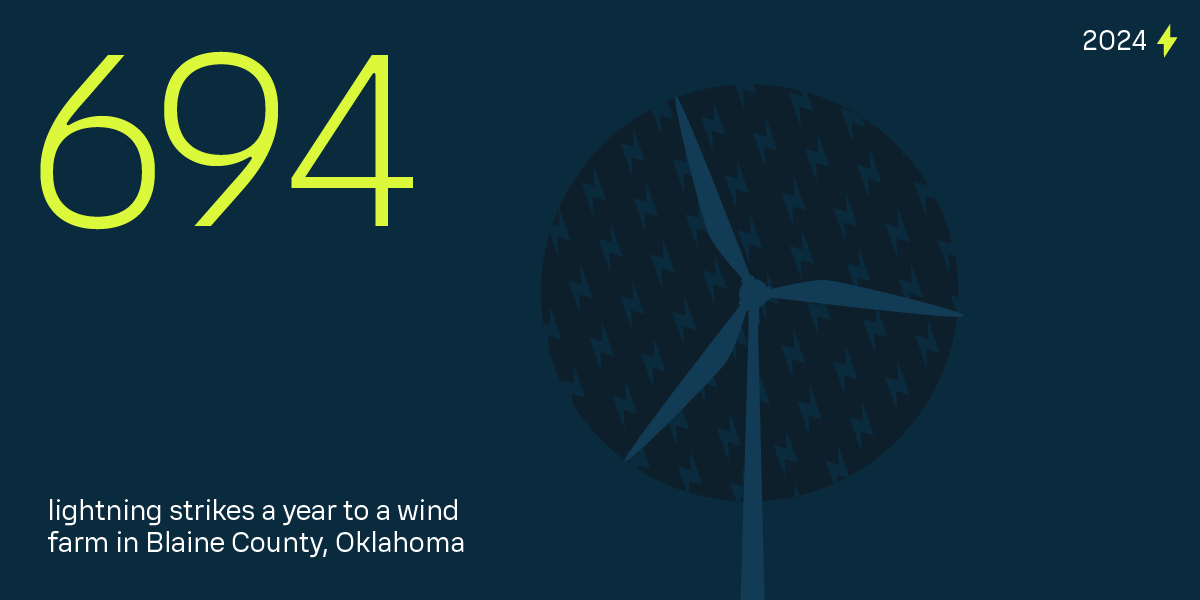
A wind farm in Blaine County, Oklahoma, endures 694 lightning strokes a year, the highest for a U.S. wind farm in raw numbers.
Even though it sees less lightning overall, a wind farm in Pushmataha County, Oklahoma, faces more than four times as many lightning strokes per turbine, making it the most lightning-prone wind farm in the United States. This wind farm sees an average of 10 lightning strokes per turbine per year. One turbine at this location has been struck 111 times since 2019.
Wind turbines have lightning protection systems that channel electrical energy safely into the ground. Even so, lightning damage costs the industry more than $100 million annually and accounts for 60% of blade losses.
Read the full report for the locations of the 20 most lightning-prone U.S. wind farms and other insights.
Which towns were U.S. state lightning capitals in 2024?
Have you ever wondered which towns and cities in the United States see the most lightning each year?
In 2024, Teague, Texas, was the lightning capital of the United States. Situated 85 miles southeast of Dallas in Freestone County, Teague saw 735 lightning events per km2 in 2024 (1,903 per square mile). Orlando, Florida, took second place with 414 events per km2. Check out the full report to see all 50 state lightning capitals.
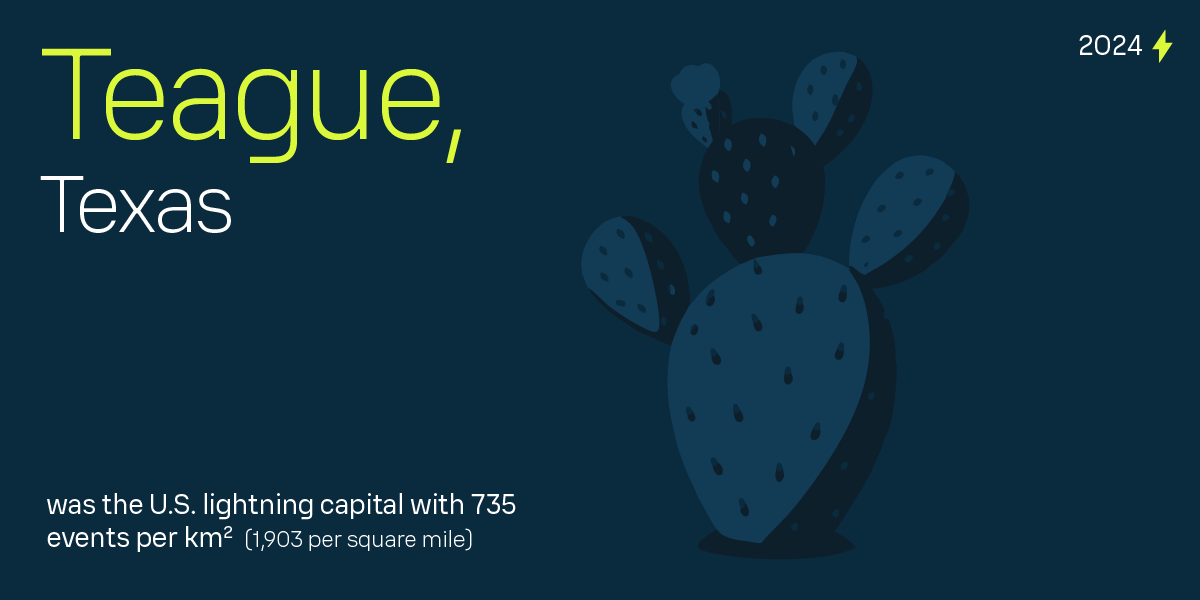
At the county level, Walker County, Texas, took the top spot with 318 lightning events per km2 (825 per square mile). San Jacinto County, Texas, saw the most cloud-to-ground lightning flashes, with 11.2 strikes per km2 (28.9 per square mile).
Texas also placed first in the state rankings with 40,434,603 total lightning events in 2024, more than the next three states—Florida (15,568,357), Oklahoma (13,610,926) and Kansas (10,963,205)—combined.
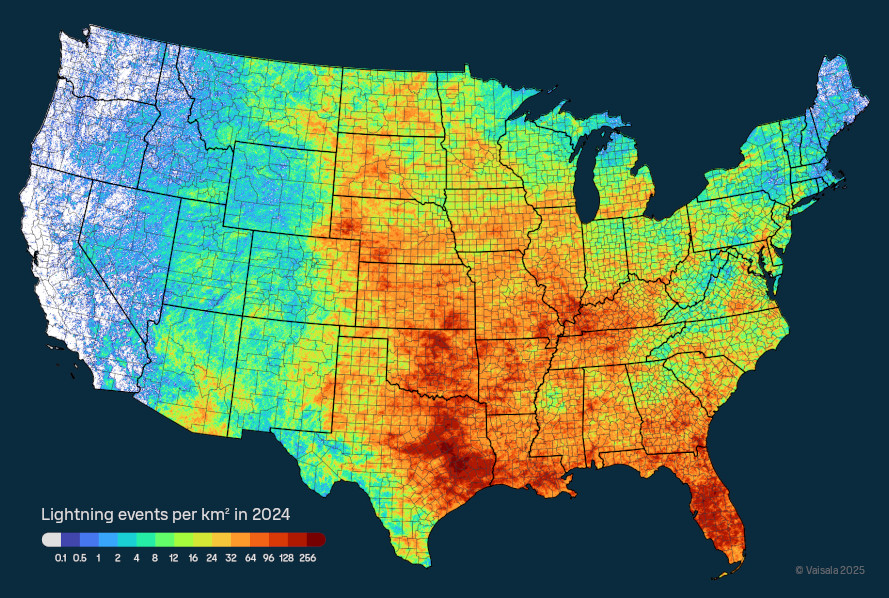
2024 lightning density map of the United States
Discover 2024 lightning statistics
2024 was the hottest year on record (surpassing the record set in 2023), but the connection between temperature and lightning is complex. Our detailed lightning density maps show how lightning activity in 2024 compared with the previous eight-year average. The report also ranks U.S. states by lightning activity and highlights the year's top five days for lightning.
